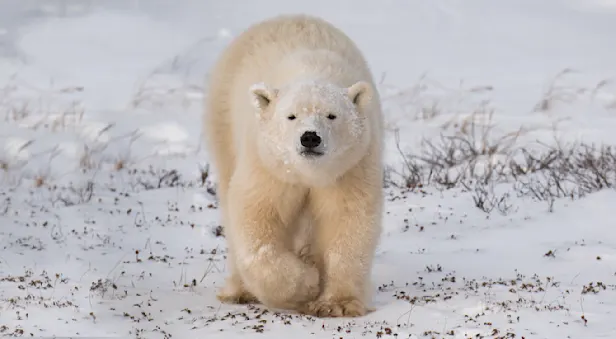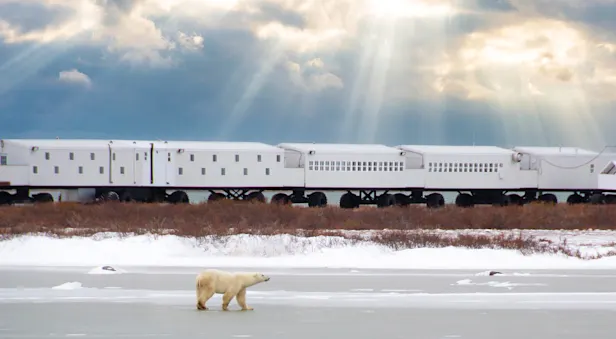Snowy Owl Facts | Churchill Wildlife Guide
PHYSICAL CHARACTERISTICS
Weighing a little more than 3 pounds, measuring between 24 and 29 inches long, and boasting a 5.5-foot wingspan on average, this powerful bird is the largest Arctic bird species. In this sexually dimorphic species, females are heavier and larger than males. Snowy owls are chiefly white, but they have dusky flecks and bands of dark brown cutting across their plumage. More predominant in immature birds, these bands are barely noticeable on males, and many older males are totally white. Snowy owls have yellow eyes and white feathers, which offer protection from the frigid Arctic weather, enveloping their feet and legs.
FEEDING HABITS
Snowy owls are carnivorous and powerful hunters. Their main food sources are lemmings and mice, but they will also take ptarmigan, murres and eiders, and can snatch char and trout from river shallows. And although it weighs only about 3 pounds, a snowy owl can catch and kill a 12-pound Arctic hare. It commonly hunts by perching high above the land, gaining a view of potential prey below. Its visual scanning of the area is facilitated by its ability to swivel its head 270 degrees.
REPRODUCTION
Courtship lasts from mid-winter to early spring. Courting males will strut to and fro, wings spread wide in an impressive display. Male snowy owls may also catch and deliver prey to females, showcasing themselves as strong providers. In some regions snowy owls mate for years or for life, while in other areas pairs nest only for a single season.
As mentioned before, a snowy owl’s primary food source is lemmings. A female snowy owl’s fertility varies according to the abundance of lemmings. In years when lemmings are scarce, a female will have a small clutch of two to three eggs. When lemmings are bountiful, she may lay as many as 15 eggs. On average, the female will lay five to eight white eggs, produced one every two days. Incubation, completed by the female, lasts 32 to 34 days. Chicks hatch every other day. In large nests, there may be a great variation in sizes according to age. Nestlings who are born later often perish, trampled by stronger siblings in the rush for their mother’s food. Dead owlets are typically eaten by the mother, or she may feed them to her more fortuitous young.Photo Credit: Jeff Goldberg




































